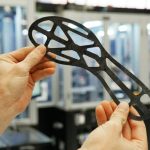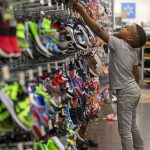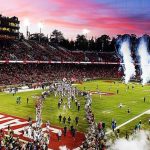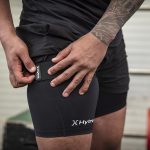Big 5 Sporting Goods management presented at the ICR conference touting their value-based business model as one that will see particular success with the new value-conscious consumer. Chairman, president and CEO Steve Miller noted that Big 5 average $213 sales per total square foot at it store, adding that those sales come at “very healthy margins.”
Though the companys value proposition seems exactly what the market wants, a heavy concentration of Big 5s 381 stores are in Southern California and Arizona, the very regions being most heavily affected by the recession. It is that very reason the Miller gave as he explained a fiscal Q4 comps decline of 8.6% as well as a 40 to 50 basis point decline in product selling margins.
To face the difficult selling environment, BGFV, like many other retailers, is focused on tightening its inventory controls, resulting in a 6%, decrease from year-ago levels, despite opening 18 more stores.
Miller described Big 5s business as roughly 50% from branded product available to all retailers and the remained from either SMUs or private label product. Just under one-third of all sales were from footwear. “We earn good margins on our in-line product,” noted Miller, “yet the margins we get are roughly 300 to 500 basis points on the product that is unique and exclusive to Big 5.”
From an advertising perspective, the retailer plans to continue its circular campaigns with approximately 13 million circulars distributed every week. Over 45% of Big 5s sales come from product shown in its advertisements, though margins remain relatively stable between advertised and non-advertised product.
Management reported that when opening new stores, those doors average about 65% of sales of a mature store in their first full year of operation and typically realize operating margins averaging approximately 17%. New stores opened since 2002 have generated an average four-wall return on investment of 36% in their first full year after opening.
He did see positives coming in H209, with the second half of the year typically providing approximately 80% of Zumiez earnings for the year. E-commerce has been a bright spot for ZUMZ, up approximately 60% for the first nine months of the this year.
Brown Shoe Co. reported same-store sales in its Famous Footwear division declined 1.5% for the quarter-to-date through January 3, 2009. Famous Footwear's gross margins declined 270 basis points versus the same period last year, as a result of a “highly promotional retail environment.” During the nine week period, unit volume increased by 5.3% and inventory decreased by 3.4% on an average store basis versus the comparable period last year.
BWS indicated that the company would continue its focus as it has over the last several years on maintaining a strong balance sheet, generating solid cash flow, and tight inventory controls. Speaking at the ICR XChange Conference, Ron Fromm, chairman and CEO, said Brown Shoe had reduced its CapEx plans over the next year by $72 million. It also cut back its store opening plan to about 20 to 25 stores in '09 while remaining open to real estate opportunities.
Fromm said the company was about to renew its $350 million facility with more than the $350 million already secured. “That will close early — probably in just a few weeks, by the end of the fiscal year,” said Fromm.
Approaching the next year is all about cash flow, said Henry. “As we think about our credit facility being fully available to us with no borrowings entering next year, another key thing to understand about our cash flow performance next year is, we are going to start with a $45 million head start,” he continued. “Because when you look at depreciation of $75 million versus a $30 million of CapEx, there is going to be a $45 million positive impact through our cash flow statement as it relates to our cash position.”
Kasaks also mentioned that the companys website has slowly been increasing in sales. Year-to-date, PacSun.com increased 46% to about $42 million in sales and in 2007, the site had a strong increase of 48% to $30 million in volume.
Lululemons balance sheet is a rarity in todays economic environment CEO Christine Day said in an investor conference earlier this week, noting that the company has no debt. “We have a very strong balance sheet And we finished the third quarter with over $53 million, which is one of our lowest quarters of the year in terms of cash flow,” she said. “We actually have strong cash flow. All four quarters were not reliant on a December seasonal holiday to really make our year.”
CFO John Currie said that over the past three years, LULU has seen an almost 90% revenue growth.
“Part of that growth comes from new store openings,” said Currie. “And we've successfully extended our real estate rollout; as Christine said, we're on track for our 35 new stores this year. At the end of Q3, we were at 107 stores.”
Despite its positive expectations for 2009, the company still remains cautious in its guidance and reduced its earnings guidance by $40 million. “The balance was reflecting a slowdown in sales due to the economic downturn, so we changed our comp store guidance for the year from high-single-digits to high negative single-digits. And of course, EPS is impacted with our revised guidance down from 68 cents to 71 cents range down to 55 cents to 57 cents.”
More than one-third of CAB merchandise carries the Cabela's label, which provides higher margins by 500 to 1000 basis points.
Moving forward, though, the company will shift its focus from the massive 150,000 square foot stores it had been opening to smaller doors of approximately 80,000 square feet. The first one we have opened was in Rapid City, South Dakota, an 80,000 square foot store this fall.
Responding to a question on the companys credit card program, CFO Ralph Castner, commented that “Not surprisingly, we have seen an increase in charge-offs We have seen an increase in both delinquencies and bad debts.”















